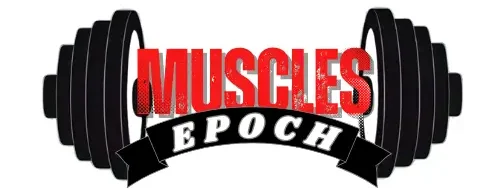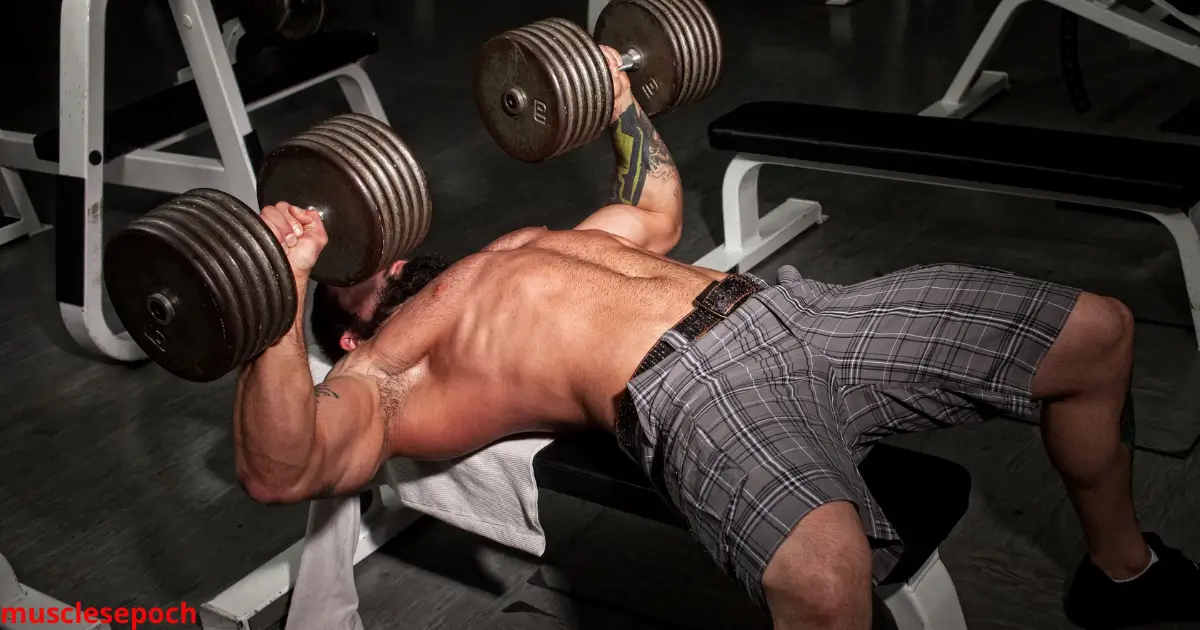When it comes to building a strong, sculpted chest, you don’t need a fully stocked gym or a barbell bench press. A pair of dumbbells and the right strategy can be just as effective—if not more—when it comes to activating and developing your pecs. Whether you’re working out at home or in a gym, a chest workout with dumbbells offers unmatched versatility, improved muscle balance, and a deeper range of motion that machines or barbells simply can’t replicate. In this guide, we’ll break down the best dumbbell exercises for chest development, walk you through complete routines for all fitness levels, and show you how to get the most out of your chest day—anytime, anywhere.
Why Choose Dumbbells for Chest Training?
Improved Range of Motion for Greater Activation
One of the biggest advantages of using dumbbells for chest workouts is the significantly greater range of motion (ROM) they allow compared to barbells or machines. When you perform dumbbell presses or flys, each arm moves independently. This freedom of movement lets you lower the weights deeper during the eccentric (lowering) phase and bring them closer together during the concentric (lifting) phase—resulting in a more complete stretch and contraction of the pectoral muscles.
This extended ROM plays a crucial role in muscle hypertrophy. The deeper the stretch and the more intense the contraction, the more muscle fibers are recruited. This means greater muscle activation, especially in the inner and lower chest, areas that can be harder to target with fixed-path machines or barbells.
For example, in a flat dumbbell bench press, the weights can travel slightly lower than the chest—something you can’t achieve with a barbell that hits your chest and limits depth. Similarly, in a dumbbell fly, the wide arc motion allows for a deep stretch across the entire chest, enhancing the muscle-building stimulus.
Improved range of motion also encourages better joint health and flexibility over time. It helps strengthen stabilizing muscles around the shoulders and elbows, making your overall pushing mechanics safer and more functional—especially important for home workouts where machines aren’t available.
In short, dumbbells don’t just offer an alternative—they provide a superior training stimulus for chest development when used correctly.
Balanced Muscle Development
One of the most overlooked yet powerful benefits of dumbbell training is its ability to promote balanced muscle development, especially for the chest. Unlike barbells or machines, which allow your dominant side to compensate for weaknesses, dumbbells force each side of your body to work independently and equally. This ensures that your stronger arm can’t “take over” during a lift, helping correct muscular imbalances and develop symmetrical strength and size across both pecs.
Many lifters—especially beginners or those coming from machine-based training—notice that one side of their chest is more developed or stronger. Dumbbell exercises immediately reveal and address these differences by requiring each arm to stabilize, lift, and control the weight on its own. Over time, this leads to more even growth in both the major and minor pectoral muscles, contributing to a well-proportioned upper body.
Additionally, dumbbell movements engage more stabilizing muscles, including the anterior deltoids, triceps, and scapular stabilizers. This not only improves overall functional strength but also creates a more aesthetically pleasing and balanced look—particularly when training for physique or performance.
Whether you’re doing dumbbell bench presses, flys, or pullovers, you’ll notice improved symmetry and muscle coordination, especially when focusing on controlled reps and form. Balanced development isn’t just about looks either—it also reduces your risk of injury and enhances your strength potential in other lifts.
In essence, if you’re aiming for equal strength, symmetry, and long-term chest gains, incorporating dumbbells into your routine is one of the smartest training decisions you can make.
Accessibility and Versatility
One of the greatest strengths of a dumbbell-based chest workout is its unmatched accessibility and versatility, making it ideal for nearly every training environment and fitness level.
Accessibility means you don’t need a full gym setup or expensive machines to effectively train your chest. A single pair of dumbbells—adjustable or fixed—can provide all the resistance you need to build strength and size. Whether you’re training in a commercial gym, a garage, your living room, or a hotel room, dumbbells are compact, portable, and easy to use. This makes them the perfect solution for those who want a convenient, no-excuse approach to chest training.
Versatility comes from the wide variety of movements and angles you can target with dumbbells. With a barbell or machine, you’re often locked into a fixed path of motion. Dumbbells allow for more freedom—giving you the ability to perform flat, incline, and decline presses, fly variations, pullovers, and even floor-based exercises if you don’t have access to a bench.
This variety enables you to hit every part of your chest—the upper, mid, and lower pectorals—and adjust your workouts based on your equipment, space, or training goals. Want to focus on upper chest? Grab a bench and incline your dumbbell press. Don’t have a bench? Do floor presses or floor flys. Traveling? Bring a pair of adjustable dumbbells and follow a time-efficient circuit.
Dumbbells also scale well across experience levels. Beginners can start light and focus on form and control, while advanced lifters can go heavier, incorporate supersets, or manipulate tempo for more intensity. The freedom to customize makes dumbbells a smart choice for progressive overload, functional strength, and long-term training adaptability.
In short, dumbbells offer an incredibly accessible and versatile way to build a powerful chest—anywhere, anytime, at any level.
Top Dumbbell Chest Exercises for Size and Strength
Dumbbell Bench Press (Flat, Incline, Decline Variations)

The dumbbell bench press is a foundational chest exercise that rivals—and in many ways surpasses—the traditional barbell press when it comes to muscle activation, joint health, and range of motion. Unlike barbells, dumbbells allow each arm to move independently, enabling a more natural pressing path and deeper stretch at the bottom of the movement, which results in greater pec activation and balanced muscle development.
One of the biggest advantages of dumbbell pressing is its versatility in angles, which allows you to target different areas of the chest by simply adjusting the bench:
Flat Dumbbell Bench Press
- Primary Focus: Overall chest development, especially the mid-pec region.
- Why It’s Essential: It mimics the traditional barbell bench press but offers a safer and more joint-friendly motion. It also engages stabilizing muscles to a greater degree.
- Tip: Keep your elbows at a 45-degree angle to protect your shoulders and maximize chest tension.
Incline Dumbbell Bench Press
- Primary Focus: Upper pectorals and front deltoids.
- Why It’s Important: Most people have underdeveloped upper pecs, which contribute to chest fullness and aesthetics. The incline press emphasizes this area and improves posture.
- Tip: Set the bench at a 30–45° angle. Too steep and it shifts emphasis to the shoulders.
Decline Dumbbell Bench Press
- Primary Focus: Lower chest fibers and overall pressing strength.
- Why It’s Useful: Helps create the “shelf” or bottom line of the chest for a fuller look. It also tends to reduce shoulder stress compared to flat presses for some lifters.
- Tip: Keep your core tight to maintain stability, especially if training without a decline bench setup.
Incorporating all three variations into your weekly chest routine ensures comprehensive muscle development across the entire chest. Dumbbells also let you adjust your grip slightly—from neutral to slight pronation—which can further modify the muscle activation pattern to suit your needs and reduce joint strain.
Whether you’re training at home with a foldable bench or at a gym with multiple incline settings, the dumbbell bench press in its flat, incline, and decline forms is a must-have trio for anyone serious about chest gains.
Dumbbell Chest Fly
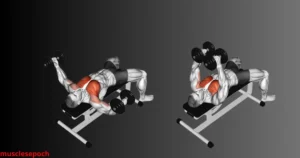
The dumbbell chest fly is one of the most effective isolation exercises for directly targeting the pectoralis major, particularly the inner chest fibers that are harder to engage during pressing movements. Unlike presses, which involve multiple joints and muscles like the triceps and shoulders, the chest fly focuses on stretching and contracting the pecs, helping to create that deep, sculpted chest look.
How It Works
During a dumbbell fly, your arms move in a wide arc while keeping a slight bend in the elbows. This motion mimics a “hugging” action and puts the chest under maximum stretch during the lowering phase (eccentric), followed by a powerful contraction as you bring the weights together. This makes the fly perfect for enhancing muscle fiber recruitment and hypertrophy.
Key Benefits
- Deep Chest Stretch: The wide motion allows you to stretch the pec muscles more than most pressing exercises, especially at the bottom of the movement.
- Improved Muscle Definition: Because of the isolation and controlled movement, chest flys help carve out the inner chest and define the separation between the pecs.
- Shoulder-Friendly Alternative: When performed correctly, flys are easier on the shoulders than heavy presses, making them great for joint-friendly hypertrophy.
Variations for Any Setup
- Bench Fly: Performed on a flat, incline, or decline bench to emphasize different chest angles. Incline flys hit the upper pecs, while decline targets the lower chest.
- Floor Fly: A safe alternative if you don’t have a bench. The floor stops your arms from lowering too far, which protects the shoulders and is ideal for beginners.
- Staggered or Alternating Flys: These variations help build unilateral control and improve core stabilization.
Form Tips
- Maintain a slight bend in your elbows throughout the movement to avoid strain.
- Lower the dumbbells slowly to feel the stretch—don’t drop them or let gravity take over.
- At the top, stop just short of the dumbbells touching to keep tension on the chest.
Whether you’re a beginner or a seasoned lifter, adding dumbbell flys to your chest routine is essential for developing round, full, and well-defined pecs. Use them after your heavy pressing movements to fully exhaust the chest fibers and stimulate serious growth.
Dumbbell Pullover
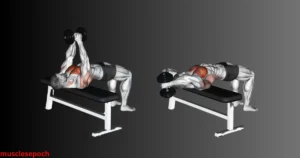
The dumbbell pullover is one of the most underrated yet incredibly effective chest exercises you can perform with a single dumbbell. It’s unique because it not only works the pectoralis major but also engages the latissimus dorsi, making it a powerful compound movement that bridges the gap between your chest and back. When performed correctly, the dumbbell pullover delivers a deep stretch through the chest, enhances rib cage expansion, and helps build upper-body density and depth.
What It Targets
While traditionally classified as a chest movement, the dumbbell pullover also activates:
- Serratus anterior and intercostals (important for aesthetics and breathing capacity)
- Lats and triceps (depending on arm angle and form)
- Core stabilizers (especially if performed on a flat bench)
This makes the pullover a multi-functional hypertrophy tool, especially beneficial in minimalist dumbbell programs.
Benefits of the Dumbbell Pullover
- Chest Expansion: The deep overhead stretch targets muscle fibers not fully engaged in presses or flys, especially the upper and inner chest.
- Improved Flexibility and Mobility: Helps improve thoracic spine and shoulder mobility, essential for overhead and pressing movements.
- Time-Efficient Compound Lift: Trains multiple upper-body muscle groups in a single move, saving time while maximizing return.
- Enhanced Breathing and Posture: Historically used by bodybuilders like Arnold Schwarzenegger to open up the chest cavity and expand the ribcage for a more dramatic V-taper.
How to Perform It
- Lie flat on a bench with a single dumbbell held vertically over your chest.
- With your arms slightly bent, slowly lower the dumbbell behind your head in an arc until you feel a stretch in your chest and lats.
- Pause briefly, then bring the weight back over your chest in a controlled motion, focusing on squeezing the pecs at the top.
Pro Tip:
For more chest activation, keep the arms closer to the midline and focus on bringing the dumbbell back over using your pecs. To emphasize the lats, allow for a slightly wider arc and a deeper reach behind the head.
The dumbbell pullover can be a finisher move at the end of your chest workout or used as a transition exercise between chest and back routines. It offers a unique stretch-contraction stimulus that presses and flys can’t replicate, making it an excellent addition for those seeking a more complete, three-dimensional chest.
At-Home Chest Workout Plan Using Dumbbells
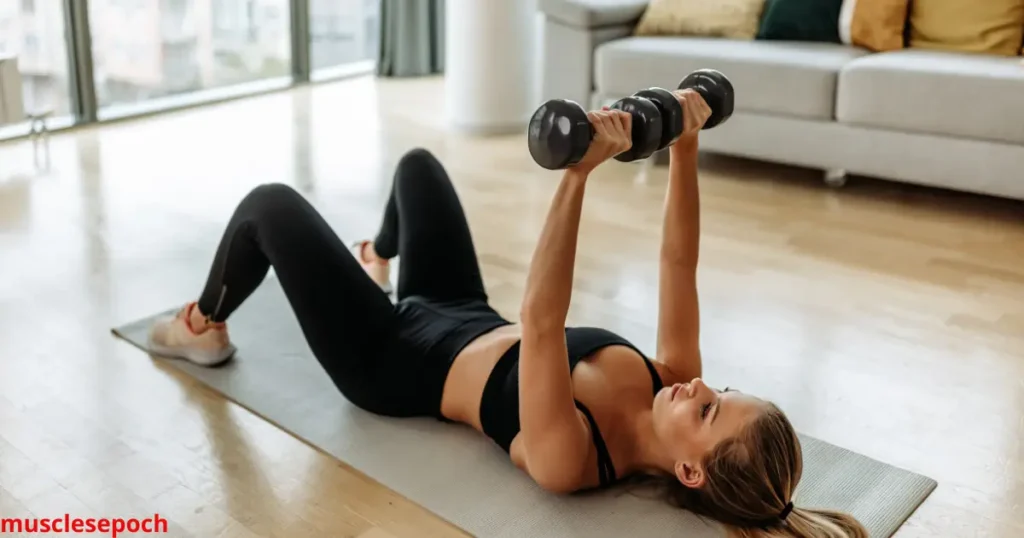
Beginner-Friendly Routine (No Bench Needed)
Getting started with dumbbell chest training doesn’t require a fancy gym setup or even a bench. Whether you’re training at home, in a small apartment, or while traveling, you can still get an effective chest workout using just a pair of dumbbells and the floor. This beginner-friendly routine focuses on foundational movements, improves muscle control, and minimizes injury risk while targeting the pectoralis major and supporting muscles.
Training without a bench also offers unique advantages—built-in range-of-motion control, increased focus on form, and safer mechanics for those new to strength training.
Routine Overview
Perform this routine 2–3 times per week with at least one day of rest between sessions. Use light to moderate weights that allow you to focus on technique, mind-muscle connection, and full control.
| Exercise | Sets | Reps | Rest |
|---|---|---|---|
| Dumbbell Floor Press | 3 | 10–12 | 60 sec |
| Dumbbell Floor Chest Fly | 3 | 12–15 | 60 sec |
| Dumbbell Pullover | 3 | 10–12 | 60 sec |
Exercise Descriptions
1. Dumbbell Floor Press
- How it works: Lying on your back with knees bent, press dumbbells from the floor directly upward.
- Why it’s great: Limits shoulder strain and teaches proper pressing form while emphasizing the mid-chest.
2. Dumbbell Floor Chest Fly
- How it works: With arms slightly bent, move the dumbbells in a wide arc from chest height down to just above the floor, then back up.
- Why it’s great: Offers an excellent stretch and contraction without risking overextension, making it safe for beginners.
3. Dumbbell Pullover
- How it works: Hold one dumbbell with both hands and slowly move it from above your chest to behind your head in an arc, then return.
- Why it’s great: Trains the upper chest, serratus anterior, and helps improve shoulder mobility and breathing mechanics.
Pro Tips for Beginners
- Start with controlled, slow movements to focus on form and maximize tension.
- Don’t worry about heavy weight—consistency and technique will build your foundation.
- If your floor is hard, use a yoga mat or towel for support and comfort.
- To progress over time, increase reps or sets before increasing weight.
With no bench required, this routine proves that building a strong, defined chest can start anywhere—with just a pair of dumbbells and a commitment to moving well.
Intermediate Routine with Adjustable Bench
Once you’ve mastered the basics of dumbbell chest exercises and built foundational strength, it’s time to elevate your training with an adjustable bench. This versatile piece of equipment allows you to perform a wider variety of movements targeting different parts of your chest more precisely, enabling balanced muscle growth and improved strength.
This intermediate routine is designed for lifters who are comfortable with dumbbell exercises and ready to challenge their chest muscles through varied angles and increased volume. Incorporating flat, incline, and decline positions, it targets the upper, mid, and lower pectorals to help you build a fuller, more defined chest.
Routine Overview
Perform this workout 3 times per week with 48 hours of rest between sessions. Focus on progressive overload by gradually increasing weight or reps while maintaining good form.
| Exercise | Sets | Reps | Rest |
|---|---|---|---|
| Flat Dumbbell Bench Press | 4 | 8–10 | 90 sec |
| Incline Dumbbell Bench Press | 4 | 8–10 | 90 sec |
| Decline Dumbbell Bench Press | 3 | 10–12 | 60–75 sec |
| Dumbbell Chest Fly (Flat or Incline) | 3 | 12–15 | 60 sec |
| Dumbbell Pullover | 3 | 10–12 | 60 sec |
Exercise Details and Tips
Flat Dumbbell Bench Press:
This classic move continues to build overall chest thickness and strength. Ensure controlled descent and press explosively for power. Focus on engaging the chest by keeping elbows at about a 45-degree angle.
Incline Dumbbell Bench Press:
Elevate the bench to a 30–45 degree angle to emphasize the upper chest. Avoid going too steep, which can shift emphasis to the shoulders. Keep movements smooth and focus on a full range of motion.
Decline Dumbbell Bench Press:
Targeting the lower chest, the decline press helps create definition and adds fullness to the bottom pecs. Maintain core tightness to stabilize your body on the decline bench.
Dumbbell Chest Fly (Flat or Incline):
Choose flat or incline based on your focus area. Slow eccentric (lowering) phase maximizes muscle stretch and hypertrophy. Keep a slight bend in your elbows to protect your joints.
Dumbbell Pullover:
Use this as a finisher to stretch and contract the chest fully, also engaging your lats and serratus anterior. Keep core tight and control the dumbbell’s movement to avoid shoulder strain.
Progression and Modifications
- Increase weight gradually while keeping perfect form to ensure continued muscle growth.
- To boost intensity, slow down the eccentric phase (lowering the weights) to increase time under tension.
- Add drop sets or supersets between presses and flys to fully fatigue your chest muscles.
- If you lack a decline bench, focus more on incline and flat presses, or try floor presses as a substitute.
Using an adjustable bench opens up your training possibilities and enhances the effectiveness of your dumbbell chest workout. This routine not only builds size and strength but also improves muscle balance and joint stability, making it perfect for intermediate lifters looking to take their chest development to the next level.
Time-Saving Circuit Format (20-Minute Burnout)
For busy individuals or those looking to maximize their workout efficiency, a circuit training format offers a powerful way to build chest muscle with dumbbells in a short amount of time. This 20-minute burnout routine combines multiple exercises into a continuous circuit, keeping your heart rate elevated while targeting the chest muscles from different angles.
Circuit training not only boosts muscular endurance and hypertrophy but also adds a cardio element, helping to burn fat while building muscle—making it a perfect blend of strength and conditioning.
How the Circuit Works
Instead of traditional sets and long rest periods, perform each exercise back-to-back with minimal rest in between (15–30 seconds). After completing the entire circuit, rest for 1–2 minutes before repeating. Aim for 3–4 rounds total, depending on your fitness level.
This format increases training density (more work in less time), stimulates muscle growth through metabolic stress, and improves cardiovascular fitness.
20-Minute Circuit Workout
| Exercise | Duration/Reps | Notes |
|---|---|---|
| Dumbbell Chest Press (Flat) | 12 reps | Moderate weight, controlled |
| Dumbbell Chest Fly (Floor or Bench) | 12–15 reps | Focus on stretch and squeeze |
| Dumbbell Pullover | 10 reps | Full range of motion |
| Push-Ups | 15 reps | Bodyweight, to failure if possible |
| Dumbbell Incline Press | 10 reps | Bench set at 30–45 degrees |
Benefits of This Circuit Format
- Maximized Time Efficiency: Complete a full chest workout in around 20 minutes—ideal for hectic schedules.
- Enhanced Muscle Pump: The continuous work increases blood flow, swelling the muscle with nutrients for optimal growth.
- Improved Endurance and Strength: High-rep sets with short rests enhance muscular stamina without sacrificing strength gains.
- Increased Fat Burn: The cardio element keeps your metabolism high, helping to reduce fat while preserving muscle.
Tips for Success
- Choose a weight that challenges you but allows completion of each set with good form.
- Keep rest between exercises minimal but take full rest between circuits.
- Focus on controlled movement and muscle engagement, especially during flys and pullovers.
- Warm up properly before starting to prevent injury and cool down/stretch afterward to aid recovery.
This time-saving circuit is perfect for anyone wanting to maintain or build chest muscle without spending hours in the gym. It’s also highly adaptable—you can swap in your favorite dumbbell chest exercises to keep it fresh and aligned with your goals.
Tips for Maximum Chest Gains with Dumbbells
Progressive Overload Strategies
Progressive overload is the cornerstone of muscle growth and strength development. Simply put, it means gradually increasing the demands on your muscles over time to stimulate adaptation. Without this consistent challenge, your chest muscles will plateau and stop growing, no matter how often you work out. Implementing smart progressive overload strategies ensures continuous gains and prevents stagnation in your dumbbell chest workouts.
Key Methods to Apply Progressive Overload
- Increase Weight (Load) Gradually
The most straightforward way to challenge your muscles is to slowly increase the dumbbell weight you lift. For example, if you’re currently pressing 20-pound dumbbells, aim to move up to 22.5 or 25 pounds once you can complete your reps with perfect form. Even small increments make a big difference over weeks and months. - Increase Repetitions
If heavier dumbbells aren’t immediately available, increase the number of reps per set. For instance, progressing from 8 to 12 reps per set increases total training volume, encouraging muscle growth. - Add More Sets
Another way to increase workload is by adding an extra set to your exercises. Going from 3 sets to 4 or 5 sets per movement boosts overall volume and intensity. - Improve Exercise Technique and Time Under Tension
Slowing down the eccentric (lowering) phase of your movements and maintaining muscle tension longer can intensify your workouts without changing weight or reps. For example, taking 3–4 seconds to lower the dumbbells during a chest fly can stimulate greater muscle damage and growth. - Reduce Rest Periods
Shortening rest times between sets increases workout density and metabolic stress, both of which contribute to hypertrophy and endurance improvements.
Tracking and Planning Overload
- Keep a Workout Journal: Record your weights, reps, sets, and rest times. Tracking progress helps you know when it’s time to increase difficulty.
- Set Short-Term Goals: Aim to increase either weight, reps, or sets every 1–2 weeks based on your recovery and performance.
- Listen to Your Body: Progressive overload should be challenging but never painful. Avoid pushing through discomfort or poor form to prevent injury.
Common Mistakes to Avoid
- Increasing Weight Too Quickly: Jumping to much heavier dumbbells prematurely can compromise form and increase injury risk.
- Neglecting Recovery: Muscles grow outside the gym, so allow adequate rest and nutrition to support progressive overload.
- Focusing Solely on One Variable: A balanced approach, combining weight, reps, sets, and tempo adjustments, yields the best results.
By consistently applying progressive overload in your dumbbell chest workouts, you’ll ensure your pecs keep growing stronger and bigger. Remember, progression doesn’t have to be drastic—small, steady improvements add up to major gains over time.
Chest Activation Cues and Mind-Muscle Connection
Maximizing muscle growth isn’t just about lifting weights—it’s about how you lift them. For chest training, understanding and applying proper muscle activation cues can make the difference between a mediocre pump and a game-changing workout. This is where the mind-muscle connection (MMC) comes in: the deliberate focus on contracting your chest throughout each rep to ensure maximum engagement.
What Is the Mind-Muscle Connection?
The mind-muscle connection is the conscious effort to feel the target muscle working during every phase of an exercise. Rather than just going through the motions, you intentionally squeeze, control, and isolate the chest to drive activation.
Studies show that focusing on the working muscle group during resistance training can increase muscle activation and enhance hypertrophy, particularly in experienced lifters.
Essential Chest Activation Cues
Use these cues to ensure you’re truly working your pecs and not relying on secondary muscles like shoulders or triceps:
- “Squeeze Your Pecs, Not Just Press”
When pressing dumbbells, focus on squeezing your chest muscles together rather than just pushing the weights up. Imagine you’re trying to “hug” something between your arms. - “Elbows at 45 Degrees”
Keep your elbows at about a 45-degree angle to your torso during presses. This position reduces shoulder strain and improves chest engagement. - “Stretch and Contract”
During flyes or pullovers, emphasize a deep stretch at the bottom and a strong contraction at the top. Pause briefly at both points to maximize tension. - “Drive From the Chest”
Initiate each movement with the chest muscles rather than letting the shoulders take over. Think of your chest as the engine, not the passengers.
Tips to Improve Your Mind-Muscle Connection
- Warm Up With Activation Sets: Start with light dumbbell flyes or push-ups, focusing purely on the squeeze. This “wakes up” the chest and prepares it for heavier lifts.
- Slow Down Your Reps: Perform each rep with control—3 seconds on the way down, 1-second pause, and an explosive but controlled lift.
- Visualize the Muscle Working: Before and during each set, picture your chest contracting and expanding. Visualization enhances neuromuscular activation.
- Use Pre-Exhaust Techniques: Begin your workout with an isolation move like dumbbell flyes to fatigue the chest slightly, making it easier to feel during compound movements like the dumbbell bench press.
Common Mistakes That Kill Activation
- Lifting Too Heavy Too Soon: Going too heavy can shift the focus to shoulders and arms. Start with a manageable weight to master control.
- Neglecting Form for Reps: Chasing numbers without proper technique leads to poor chest activation and increases injury risk.
- Letting Momentum Take Over: Swinging the weights or rushing through reps removes tension from the chest—focus on stability and strict form.
Mastering the mind-muscle connection and using proper activation cues will amplify your dumbbell chest training results. It’s not just about lifting heavier—it’s about lifting smarter. Train with intention, and your pecs will respond.
Common Mistakes to Avoid
Even with the best dumbbell chest workout plan, progress can stall or injuries may arise if you’re unknowingly making form or training mistakes. Understanding these common pitfalls—and how to fix them—can help you achieve better muscle activation, faster gains, and long-term success.
1. Neglecting Proper Form
Why It Happens:
Many lifters focus too much on lifting heavy and not enough on execution. This leads to momentum-based reps, poor control, and reliance on secondary muscles like shoulders and triceps.
Fix It:
- Always prioritize strict form over weight.
- Maintain a stable shoulder position (retracted and depressed).
- Move through a full range of motion, especially on flyes and pullovers.
- Perform controlled, deliberate reps with a pause at peak contraction.
2. Not Using a Full Range of Motion
Why It Matters:
Cutting reps short limits muscle fiber activation and reduces the stretch-and-contract benefit critical for chest hypertrophy.
Fix It:
- In the dumbbell bench press, lower the weights until elbows are slightly below parallel.
- In flyes, let your arms stretch wide—but with a slight elbow bend—to engage the chest fully.
- For pullovers, focus on the deep stretch behind your head and a controlled pull back over the chest.
3. Going Too Heavy, Too Soon
Why It’s a Problem:
Using excessively heavy dumbbells before mastering form often results in strain on the shoulders or elbows and reduced chest engagement.
Fix It:
- Begin with a moderate weight that allows full control for 8–12 reps.
- Progressively overload by increasing reps, sets, or time under tension before adding weight.
- Only increase dumbbell load when you can maintain perfect form throughout all reps.
4. Overlooking the Mind-Muscle Connection
Why It Matters:
Without actively engaging your chest, your triceps and delts may dominate pressing movements, reducing chest growth.
Fix It:
- Focus on squeezing your pecs on every rep.
- Use cues like “press the weights together” during flyes and presses.
- Slow down your tempo to feel each phase of the lift.
5. Skipping Warm-Ups or Pre-Activation Sets
Why It’s Risky:
Jumping into heavy dumbbell pressing with cold muscles increases injury risk and reduces performance.
Fix It:
- Do 1–2 light sets of chest activation exercises (e.g., push-ups or light flyes).
- Add dynamic shoulder and scapular warm-ups to protect your joints and prep your pressing muscles.
6. Ignoring Progressive Overload
Why It Halts Gains:
Repeating the same workout without increasing intensity leads to plateaus.
Fix It:
- Track your workouts to monitor progress.
- Gradually increase dumbbell weight, reps, or time under tension.
- Try advanced methods like supersets, slow eccentrics, or drop sets once your form is solid.
Bottom Line:
Perfecting your technique and avoiding these common mistakes can dramatically improve your dumbbell chest training. Prioritize control, muscle engagement, and safe progression—and your pecs will thank you with size, strength, and definition.
Conclusion
Training your chest with dumbbells isn’t just a convenient alternative—it’s a smart, effective way to build size, strength, and symmetry across your upper body. By incorporating movements like dumbbell presses, flys, and pullovers into your routine, you’ll activate your pecs from multiple angles while strengthening your supporting muscles and improving joint stability. Whether you’re a beginner starting with floor presses or an experienced lifter fine-tuning incline work, dumbbells offer the tools you need to transform your chest. Stay consistent, focus on form, and progressively challenge yourself—and those chest gains will follow. Now grab your dumbbells and make every rep count.
